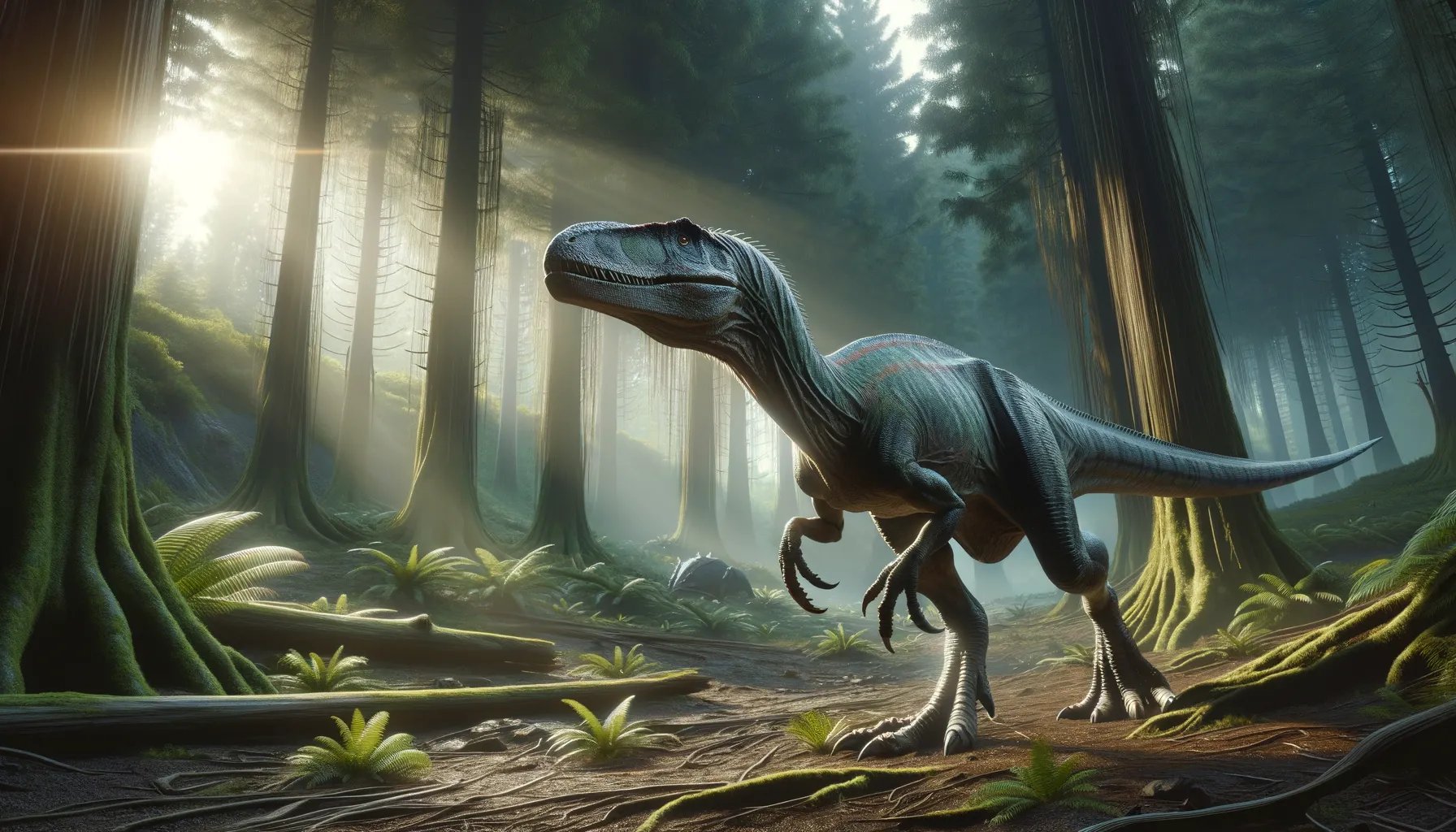
Deinonychus
Agile predator with a deadly claw!
Period
Cretaceous
Length
Around 3 meters (10 feet) long.
Height
About 1.2 meters (4 feet) at the hip.
Weight
Approximately 70 kilograms (154 pounds).
Deinonychus was a formidable predator with a sleek, agile build that allowed it to be a skilled hunter. It is known for its distinctive sickle-shaped claw on each hind foot, which it likely used to catch and hold prey. This dinosaur played a significant role in reshaping how we view the intelligence and behavior of non-avian dinosaurs. Its discovery highlighted the connection between certain dinosaur groups and birds.
Diet
Deinonychus was a carnivore that primarily fed on other smaller dinosaurs and possibly scavenged when opportunities arose. Its sharp teeth and claws were well-suited for slicing through flesh, making it an efficient predator.
Hunting
Deinonychus likely hunted in packs, using its agility and intelligence to ambush and overpower larger prey. It may have been capable of jumping onto its prey, using its claws to hold and subdue its catch effectively.
Environmental challenges
Living in a diverse ecosystem, Deinonychus faced competition with other predators for food resources. Changes in climate and sea levels during the late Cretaceous posed additional challenges, affecting habitat availability. They had to adapt to shifting prey populations and possibly fluctuating environmental conditions.
Speed
Fast runner capable of agile movements.
Lifespan
Estimated around 15-20 years.
First discovery
First discovered in 1931 in Montana, USA.
Fun Facts
- Deinonychus means 'terrible claw,' named for its impressive, sickle-shaped claw on each foot.
- Deinonychus lived during the Early Cretaceous period, around 115 to 108 million years ago.
- This dinosaur was about the size of a turkey, standing roughly 3 feet tall and measuring up to 11 feet in length.
- Deinonychus is believed to have been a swift and agile predator, likely hunting in packs.
- Studies suggest Deinonychus may have had feathers, giving it a very bird-like appearance.
- The discovery of Deinonychus challenged previous perceptions of dinosaurs as sluggish and led to the concept of active, dynamic creatures.
- Deinonychus played a significant role in popular culture, inspiring the velociraptors in the movie 'Jurassic Park' due to its fascinating traits.
Growth and Development
Deinonychus would have hatched from eggs, growing rapidly in its early years as it developed the physical traits needed for hunting. Juveniles may have relied on parental care or guidance within their social groups. This accelerated growth would have prepared them for a life of predation and survival.
Habitat
Deinonychus lived in humid, floodplain environments with rich vegetation that supported a diverse range of species. The landscape would have included rivers and forests, providing plenty of cover for stalking prey. Such habitats offered a variety of prey animals that sustained its carnivorous diet.
Interaction with other species
Deinonychus interacted with various prey species and possibly competed with other carnivorous dinosaurs. It might have occasionally come into contact with herbivorous dinosaurs, which it preyed upon. These interactions were crucial for maintaining the ecological balance within its environment.
Natural lifespan
Deinonychus's natural lifespan is estimated to be around 15 to 20 years.
Reproduction
Deinonychus would have reproduced by laying eggs, possibly in nests built in sheltered areas. Parental care might have played a role, with adults protecting their clutch until they hatched. These nurturing behaviors would have increased the survival rate of young Deinonychus.
Social behaviour
Deinonychus is believed to have exhibited social hunting behaviors, similar to wolves. These pack dynamics could have included cooperation during hunts and shared responsibilities, enhancing their hunting efficiency. Social behavior may have also included communication through vocalizations and body language.
Fossil locations
Fossils of Deinonychus have been primarily found in North America, specifically in the states of Montana, Wyoming, and Oklahoma. These discoveries provide valuable insights into the species' geographic range and paleoenvironments. Such locations highlight the regions where Deinonychus thrived during the Cretaceous.
